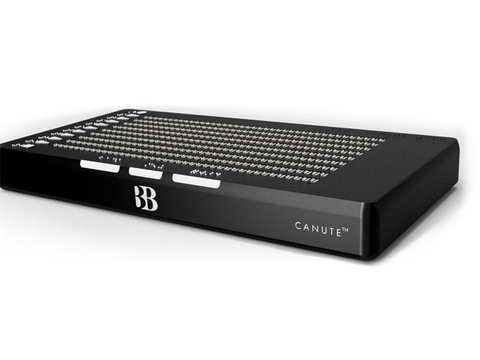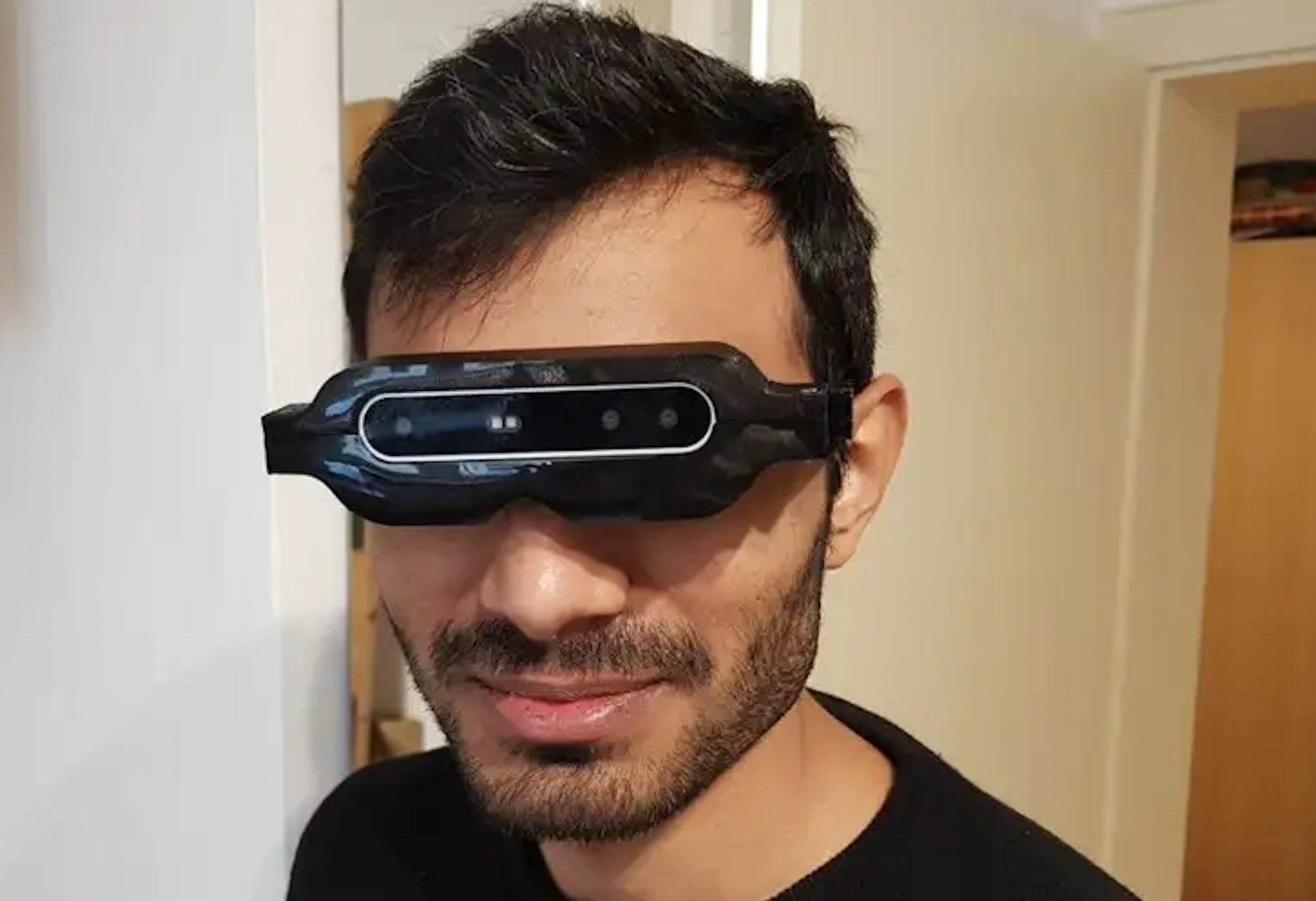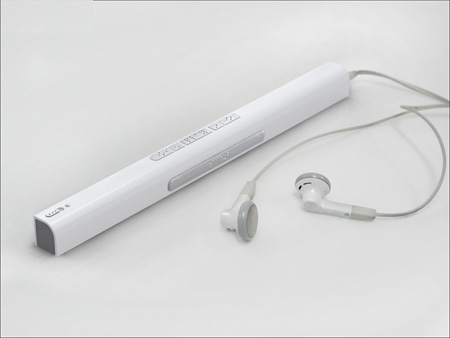Discover Ingenious Tools Created for the Aesthetically Impaired
The development of innovative tools for the visually impaired represents a considerable innovation in accessibility and self-reliance. Technologies such as smart glasses with AI capabilities and mobile applications designed to provide auditory summaries are improving day-to-day experiences for customers.
Smart Glasses for Navigating

Smart glasses made for navigation are revolutionizing the way visually damaged people connect with their environment. These sophisticated gadgets make use of a mix of camera technology, expert system, and acoustic responses to provide real-time information regarding environments. By utilizing barrier detection systems, wise glasses can inform users to possible risks, enabling safer flexibility in both acquainted and strange setups.
The assimilation of GPS modern technology better boosts navigating abilities, enabling individuals to receive auditory instructions as they relocate. This hands-free technique not just promotes independence but also encourages aesthetically damaged individuals to navigate city landscapes with boosted confidence. Additionally, many clever glasses are outfitted with attributes that determine landmarks and road indicators, supplying contextual information that boosts the customer experience.
Additionally, the advancement of these devices is consistently progressing, with business functioning to enhance the accuracy of things acknowledgment and expand the series of navigational functions. As smart glasses come to be a lot more available and cost effective, they hold the potential to substantially transform day-to-day live for visually damaged users. Inevitably, these ingenious devices stand for a crucial action toward inclusivity, offering enhanced wheelchair and a higher feeling of autonomy for people navigating the globe around them.

Mobile Application for Daily Living
Just how can mobile applications improve the lives of visually impaired individuals? Mobile applications are changing the means aesthetically impaired users navigate their settings, take care of day-to-day jobs, and gain access to information. These applications give crucial assistance with different performances, fostering freedom and enhancing lifestyle.
A number of innovative mobile applications are created specifically for day-to-day living. As an example, apps like Be My Eyes link visually impaired customers with sighted volunteers through video clip calls, enabling them to receive real-time aid with tasks such as reviewing labels or browsing unknown rooms. Similarly, Seeing AI, developed by Microsoft, uses fabricated intelligence to define surroundings, checked out message, and identify items, effectively transforming a smart device into a powerful tool for day-to-day assistance.
In addition, navigation apps tailored for the aesthetically damaged, such as Aira and BlindSquare, supply audio-based directions and environmental info, allowing customers to traverse their environments securely and confidently. Beyond navigation and instant help, mobile applications also sustain company and task management, with functions that assist customers establish reminders, create order of business, and track visits. In summary, mobile applications act as vital sources, encouraging aesthetically impaired individuals to lead more independent and fulfilling lives.
Wearable Technologies for Assistance
Empowerment through innovation is progressively obvious in the world of wearable gadgets created to help visually impaired people. These innovative tools incorporate seamlessly into daily life, enhancing navigation and providing important feedback to users. Wise glasses geared up with video cameras can check out and recognize faces message aloud, permitting individuals to communicate even more with confidence in specialist and social settings.
Another significant development is making use of haptic responses systems in wearable devices. These systems make use of vibrations or other responsive signals to communicate details regarding the user's atmosphere, such as obstacles or adjustments in terrain, boosting movement and safety and security. Wearable innovations also include wristbands that attach to mobile phones, signaling individuals to alerts through refined resonances, therefore boosting connectivity without dependence on aesthetic cues.
As these modern technologies remain to progress, they are not just improving self-reliance for aesthetically impaired individuals yet also promoting a better sense of addition in culture. By linking the gap between obstacles faced in everyday living and the possibility for freedom, wearable technologies act as crucial tools in the mission for equal rights and empowerment for those with aesthetic impairments.
Audio Description Devices
Sound summary tools play a crucial function in improving accessibility for visually damaged individuals, offering them with the capacity to engage with visual media. OCR devices for the blind. These devices offer narrated descriptions of essential visual aspects in films, television shows, and live performances, making sure that customers can totally understand the context and feelings shared through visuals
Audio summary can be integrated right into different systems, consisting of streaming services, cinema testings, and live cinema. Several preferred streaming solutions now include audio summary as an ease of access attribute, allowing viewers to choose it quickly. In enhancement to conventional media, specialized applications additionally exist, giving audio summaries for art exhibits, museums, and various other social events.
The effectiveness of audio summary pivots on the skill of the storytellers, that need to convey aesthetic information succinctly without detracting from the initial sound. Advancements in this field are additionally leading the way for even more tailored Mobility aids for visually impaired users experiences, where individuals can readjust the degree of detail and pacing according to their preferences.
Braille Innovations and Gadgets
Braille technologies and tools have actually substantially transformed the means visually impaired people communicate with message and info. Modern advancements have actually led to the advancement of versatile devices that improve literacy and freedom among customers.
Additionally, portable Braille notetakers combine typical Braille input with contemporary capabilities, assisting in note-taking, scheduling, and document editing and enhancing on the move. Speech-to-text devices for low vision. These portable devices commonly feature text-to-speech capacities, bridging the space between Braille and acoustic information
Furthermore, cutting-edge Braille printers have emerged, enabling individuals to generate Braille labels, papers, and instructional materials effectively. This access fosters higher engagement in educational and expert environments, eventually advertising inclusivity.
In addition, research into wise Braille innovations proceeds to increase. Devices that incorporate man-made knowledge are being discovered to provide real-time navigation support and contextual info, improving the customer experience in varied setups. Generally, these developments show a dedication to equipping aesthetically impaired individuals with innovation, ensuring they can quickly gain access to and engage with the world around them.

Final Thought
The development of ingenious devices for the aesthetically damaged dramatically boosts independence and quality of life. These technologies not only foster greater inclusion but also promote freedom in daily activities, eventually contributing to a more available and equitable society for aesthetically damaged people.
As smart glasses become more economical and available, they hold the potential to significantly transform daily life for aesthetically damaged individuals. Mobile apps are reinventing the method visually damaged customers browse their atmospheres, handle daily jobs, and accessibility details. Applications like Be My Eyes connect aesthetically damaged users with sighted volunteers using video clip calls, enabling them to obtain real-time aid with tasks such as reading labels or browsing unknown areas.In addition, navigation applications tailored for the visually damaged, such as Aira and BlindSquare, offer audio-based instructions and environmental info, enabling customers to traverse their surroundings securely and confidently.The innovation of innovative devices for the visually damaged significantly improves independence and high quality of life.